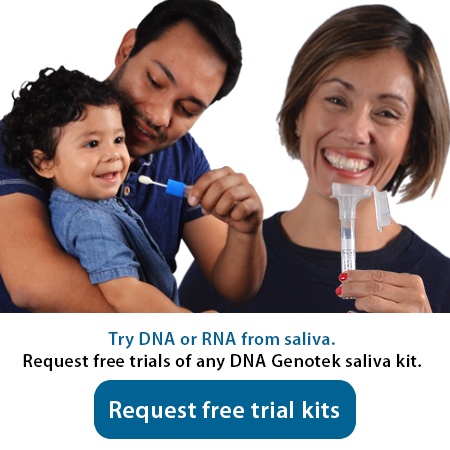2012-11-27
As specialists in the field of saliva sample collection, we understand that having saliva DNA samples that are optimized to ensure the best possible results is crucial to your research study.
The high yield, high quality DNA from saliva enables our customers to perform more studies and generate more data, thereby accelerating their research. Additionally, having non-invasive collection options such as Oragene provide researchers and participants with a collection method they actually like.
We thought it would be helpful to highlight proven tips and tricks for optimizing your samples. We know what it takes to get great results from saliva samples and we have years of experience to back that up.
We have compiled our top 10 ways to optimize DNA saliva samples that can contribute to your success. While you're reading, ask yourself if any of these tips might be useful in your lab. And if you have additional tips to share, let us know on Twitter, Linkedin or on our Facebook page.
Collection based optimization
- It is important to follow the collection instructions closely. Ensure that subjects deliver the required amount of saliva and do not eat/drink/smoke/chew gum for 30 minutes before giving a sample. Failure to follow these recommendations may result in reduced DNA yield.
- When spitting, bubbles don’t count. Make sure that the liquid saliva is at the ‘Fill To’ line; any bubbles present should be above the line. This will ensure that the optimal amount of saliva is collected. If you collect less saliva, quality isn’t affected but the DNA yield will be reduced proportionately.
- DNA yields will vary between donors. It is important to test samples from different donors to get an accurate picture of the yields you can expect.
- For donors having trouble spitting 2 ml, saliva flow can often be stimulated by rubbing the cheeks, just behind the back teeth. You can also stimulate saliva production by using a pinch of sugar on the tongue. You only need a tiny amount; just enough that the person can taste it. A drop of lemon juice also works.
- Sometimes it may be difficult to collect from a person unable to spit on command, such as a younger child. Using a collection kit designed for non-spitters, such as Oragene assisted collection (OG-675) or ORAcollect for pediatrics (OC-175), will make sample collection easier on both you and the donor and will ensure that you collect enough DNA.
Processing based optimization
- The 50°C incubation step must be carried out in the original sample tube, before removing an aliquot for DNA extraction. The incubation only needs to be done once; you don’t need to repeat this step when extracting DNA from subsequent aliquots.
- Unless specific steps are taken to remove RNA, RNA will co-purify with DNA. We recommend quantifying your DNA by fluorescence (e.g. Picogreen) since UV absorbance may overestimate the amount of DNA.
- If your downstream application requires high concentrations of DNA, you can increase concentration by reducing the amount of buffer used to dissolve the DNA pellet from 100 µL to 50 µL. It is always easier to dilute the DNA later rather than have to concentrate it.
- Oragene/saliva samples are stable at room temperature for years. If you can’t extract them right away, there is no need to refrigerate or freeze them; just leave them on the bench.
- Ensure sufficient time for DNA to dissolve after extraction. DNA extracted from Oragene/saliva samples using the prepIT•L2P method is extremely high molecular weight and, therefore, will take time to fully dissolve. After extraction, we recommend leaving the sample at room temperature overnight to allow the DNA to fully dissolve. Failure to dissolve the DNA completely may affect the accuracy of quantification.
These are our top 10 ways to optimize DNA samples. Do you have anything to add to the list? Please leave a comment and let us know.
Click on the request kits button below if you are interested in requesting free Oragene trial kits, or you can email us at info@dnagenotek.com.
Related Blogs:
How to execute large-scale DNA sample collection for genetic research - 10 essential considerations
8 facts most people don’t know about DNA from saliva



